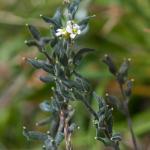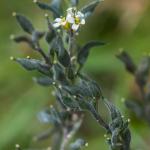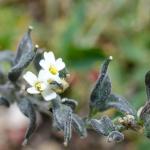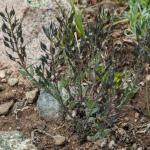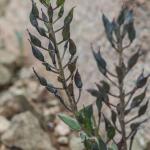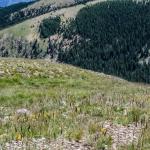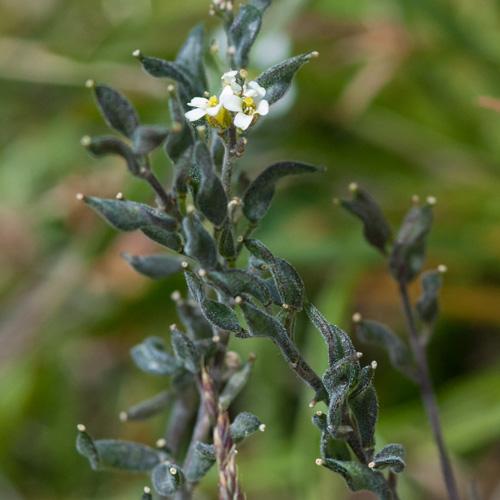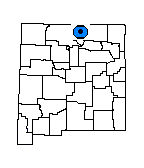Draba henrici (Frazier Mountain Whitlowgrass)
Family
BRASSICACEAE
Common Name
Frazier Mountain Whitlowgrass
| USFWS | State of NM | USFS | BLM | Navajo Nation | State Rank | Global Rank | R-E-D Code | NMRPTC Status | Strategy Status |
|---|---|---|---|---|---|---|---|---|---|
| S1 | G1 | 3-3-3 | R | SS |
| Overall Conservation Status | Documented Threats | Actions Needed |
|---|---|---|
| WEAKLY CONSERVED | Climate change and associated ecological impacts |
Additional field searches to determine rarity |
Description
Perennial herb, not cespitose; caudex few to several branched. Stems (2-) 4-10(-12) cm, erect to ascending or rarely subdecumbent. Basal leaves rosulate; petiole 2-5 mm, leaf blade narrowly oblanceolate, 5-12 × 1-2 mm, both surfaces moderately pubescent with stalked, 4(-7)-rayed trichomes, cauline leaves (8-)10-16(-20), overlapping, lanceolate to oblong or narrowly ovate, entire or rarely denticulate. Racemes 6-15-flowered, corymbose, elongated in fruit. Sepals green with white margin, ovate, 1.5-2 mm, ascending, pubescent. Petals white, oblanceolate, 3-3.5 × 1-1.5 mm; filaments white, 1.5-2 mm. Fruit (immature) narrowly oblong, 6-8 × ca. 1.5 mm, slightly twisted, sessile, divaricate-ascending, not appressed to rachis; valves puberulent with simple and 2(-4)-rayed trichomes. Flowers in July to early August.
Similar Species
Draba henrici can be distinguished from other sympatric Drabas by its white flowers and smaller petals.
Distribution
New Mexico: Taos County
Habitat
Alpine tundra above 11,000 ft (3,350m)
Remarks
Not much is known about the actual distribution and abundance of this species. Needs more surveys and documentation in alpine areas.
Conservation Considerations
Only known populations are along trails in remote alpine areas. Limited distribution and high elevation habitats make this species vulnerable to climate change.
Important Literature
*Al-Shehbaz, I.A. 2013 Draba henrici (Brassicaceae), a new species from northern New Mexico. Harvard Papers in Botany 18 (1): 91-93
Information Compiled By
Daniela Roth 2016
For distribution maps and more information, visit Natural Heritage New Mexico

